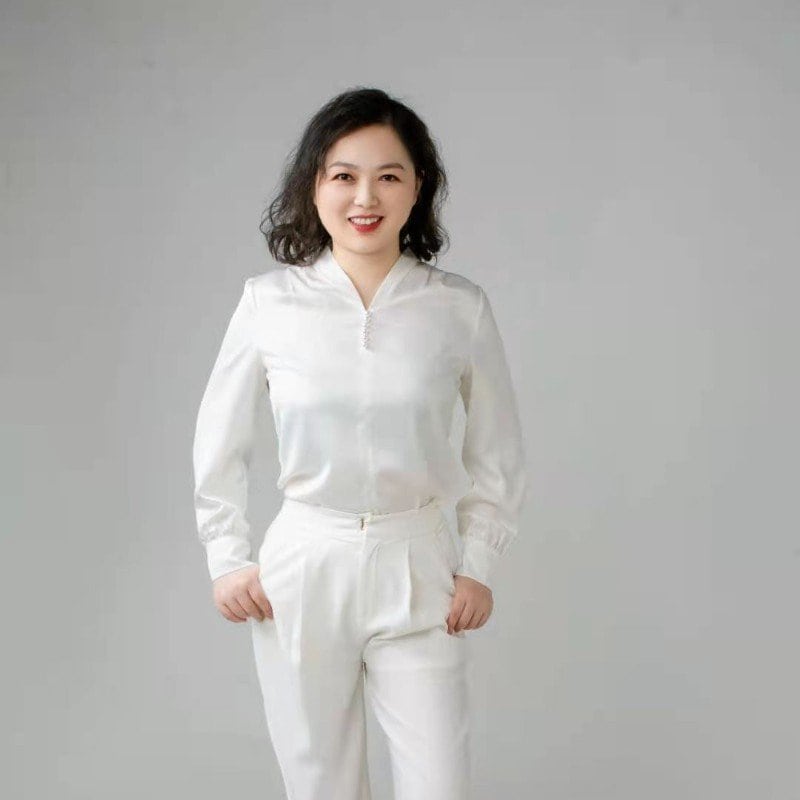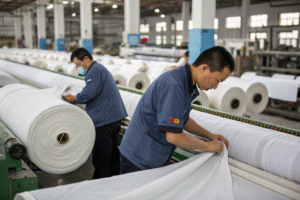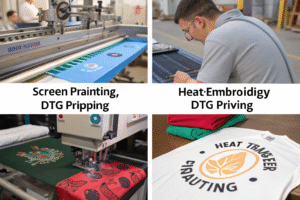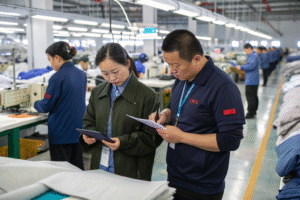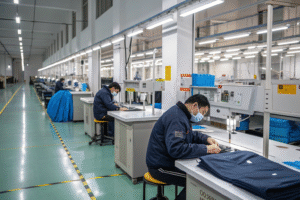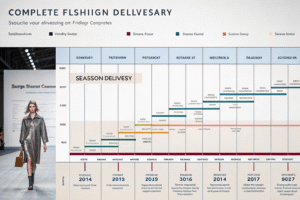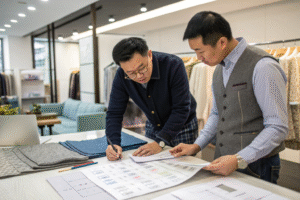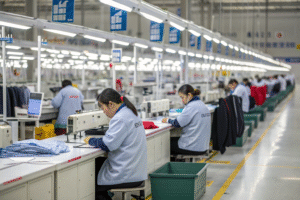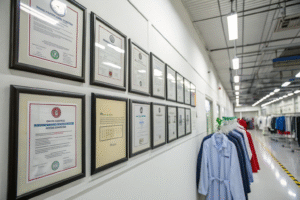Sizing charts. Free returns. AI size tools. Still, most shoppers don’t trust clothing will fit right out of the box. But what if the answer isn’t mass sizing—but personalization?
Personalized clothing can help solve the fit problem by tailoring garments to the individual’s measurements, preferences, and body shape, instead of relying on generic sizing systems.
The fashion industry is changing—and it starts by putting people first, not numbers on a label.
Why is it important for a garment to fit well?
Clothing that looks good on a hanger means nothing if it doesn’t feel good on your body.
A well-fitting garment improves comfort, confidence, and wearability, helping the wearer feel physically at ease and emotionally empowered in any setting.

What happens when clothing fits well?
- Comfort increases1 – No pulling, gaping, or restriction
- Posture improves2 – Better shoulder placement or pant length
- Style shines – Clothes complement your shape instead of hiding it
- Confidence builds3 – You stop adjusting and start enjoying
| Fit Factor | Impact on Wearer |
|---|---|
| Shoulder alignment | Feels structured, not slouchy |
| Proper waist fit | No pinching, better silhouette |
| Inseam accuracy | Enhances proportions |
| Sleeve length | Signals polish and care |
I’ve worn the same t-shirt style in two sizes. One made me look boxy. The other felt effortless. It wasn’t the design—it was the fit.
Why do brands need to prioritize this?
Because poor fit is the number one reason for returns. More importantly, it’s the top reason shoppers don’t feel confident wearing what they buy. That’s a business and emotional problem.
What is the main problem with the way clothing is made now?
The issue isn’t just sizing—it’s the system behind it. The way clothes are made today was built for speed and volume, not for people.
The main problem is that most clothing is made using outdated, standardized sizing models that don’t reflect the diversity of real human bodies.

What’s wrong with traditional production4?
- Fit models represent a narrow body type
- Grading rules assume even body proportions
- Patterns scale up/down with math, not anatomy
- Speed takes priority over tailoring
- Factories produce in bulk, then brands hope it fits someone
| Production Step | Problem Created |
|---|---|
| Standard grading | Ignores body variation5 |
| Fast production cycles | Limits refinement time |
| Sizing per region | Confuses global shoppers |
| Mass inventory | Encourages overstock + returns |
One size might “technically” fit five different people—but it won’t look or feel good on all of them. That’s where dissatisfaction starts.
Why hasn't the system changed yet?
Because:
- It's cheaper to produce one spec in bulk
- Retailers prioritize trend over tailoring
- Tech adoption in manufacturing is slow
- Body diversity still isn’t the industry norm
Until that changes, generic sizing will always be hit or miss.
What is custom fit clothing?
The opposite of generic sizing is personalization—not just in style, but in shape.
Custom fit clothing is apparel made or adjusted based on an individual’s exact body measurements, often using tech tools, tailoring, or modular design systems.
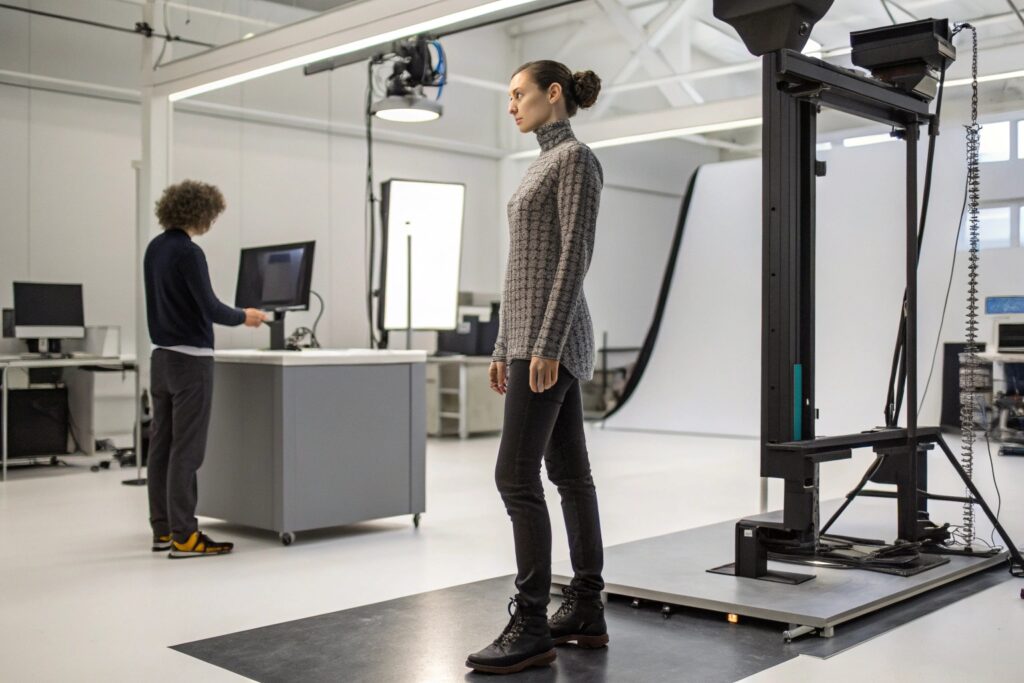
How does custom fit work?
- Made-to-measure – Clothing is made after receiving personal measurements
- Tailored off-the-rack – Ready-made garments are adjusted post-purchase
- AI fit engines6 – Tech predicts body dimensions from photos or user input
- Modular patterns – Brands use interchangeable pieces to adjust size & style
| Custom Fit Method | Key Feature |
|---|---|
| In-person tailoring | Precise, but manual |
| 3D scanning tech | Fast, scalable, digital |
| Fit quizzes / profiles | Accessible, moderately accurate |
| On-demand production | Reduces waste + enhances accuracy |
I tried a made-to-measure7 shirt from an online brand that used a simple fit quiz. It fit better than 90% of shirts I’ve ever owned—and I didn’t return it. That says a lot.
Who benefits from custom fit?
- Customers – Fewer returns, better self-image, longer wear
- Brands – Reduced waste, fewer size SKUs, stronger loyalty
- Planet – Lower overproduction, smarter logistics
The more personalized the product, the more powerful the relationship.
What is the problem in the clothing industry?
At its core, the fashion industry still operates like it’s 1995—despite major shifts in how people shop, dress, and express themselves.
The biggest problem is that fashion still treats consumers like categories, not individuals—resulting in waste, dissatisfaction, and lost trust.

What’s broken in the system?
- One-size-fits-all production
- Oversupply of trend-based inventory
- Lack of inclusive sizing8
- Poor data usage
- Minimal customer feedback loops9
| System Flaw | Impact on Consumer |
|---|---|
| Fast fashion cycles | Impulse buying, waste |
| Inconsistent sizing | Fit anxiety, returns |
| Lack of personalization | Feels generic and impersonal |
| Marketing > meaning | Loss of trust, short loyalty |
I’ve worked with brands that spend $20K a month on ads—but nothing on sizing R&D or post-purchase feedback. That imbalance shows up in returns and low retention.
How does personalized fashion10 fix this?
- Smaller, smarter production runs
- Real-time feedback on fit and wearability
- Emotional loyalty driven by real-life satisfaction
- Longer product life = higher customer value
The brands that know their customers as people—not just profiles—are the ones who will lead the next era of fashion.
Conclusion
Personalized clothing isn’t just a trend—it’s a solution. It solves the fit issue, builds trust, and transforms the way people experience fashion. The brands that invest in custom fit today will be the ones still thriving tomorrow.
-
Discover how comfort can enhance your daily life and boost your overall well-being. ↩
-
Learn about the connection between clothing fit and posture for a healthier lifestyle. ↩
-
Explore the psychological effects of clothing fit on self-esteem and confidence. ↩
-
Explore this link to understand the fundamental flaws in traditional production that affect fit and satisfaction in fashion. ↩
-
Learn about the significance of body variation in clothing design and how it can lead to better fitting garments. ↩
-
Learn about AI fit engines and their innovative approach to personalizing clothing fit through technology. ↩
-
Explore the concept of made-to-measure clothing to understand its benefits and how it can enhance your wardrobe. ↩
-
Explore how inclusive sizing can enhance customer satisfaction and loyalty in the fashion industry. ↩
-
Learn about the critical role of customer feedback in shaping successful fashion strategies. ↩
-
Discover the transformative effects of personalized fashion on customer engagement and retention. ↩


